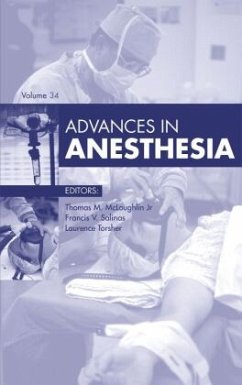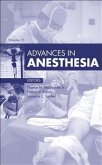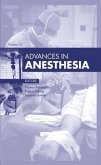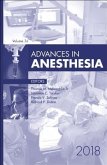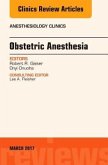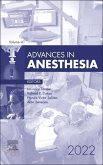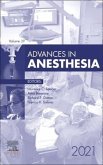Each year, Advances in Anesthesia brings you the best current thinking from the preeminent practitioners in your field. A distinguished editorial board identifies current areas of major progress and controversy and invites specialists to contribute original articles on these topics. These insightful overviews bring concepts to a clinical level and explore their everyday impact on patient care.
This book is exceptionally well produced, with a very high-quality look and feel. It is a physical pleasure to handle, and the format, fonts, layout, and use of figures make it easy to read. The series sets out to present a picture of current practice and relevant evidence across a diverse range of practice in several chapters, and it generally achieves this. Some topics are very biased to North American readers but may be of interest to others. The length of the chapters feels about right for a readership that can be assumed to be familiar with the topic but would like to refresh their knowledge and understanding and see some of the newer references. The range of topics is wide (e.g. from left ventricular assist to obstetric anaesthesia), with no obvious links between them. It is therefore hard to imagine all the chapters being of relevance to a single practitioner in much of the world. Inevitably, with multiple authors, the style, emphasis, and quality varies. The obstetric chapter by Joy Hawkins is very readable, presents an excellent summary of the key aspects, and provides much practical advice grounded in recent evidence, which is succinctly presented. There is a detailed chapter on aspects of ultrasound use in modern practice. Given the level of detail that has been attempted, I think this was overambitious. A whole edition could have been dedicated to the topic, with chapters on each area, or perhaps a narrower focus could have been chosen. Although the detail on performing ultrasound- guided procedures is admirable, I think this subject requires video imagery, dialogue, and labelling. The chapter on opiate use I found interesting from a public health perspective, but the practising anaesthetist would have benefited more from practical advice on the perioperative management of these patients, which was essentially restricted to a single page, including untrialled suggestions. In contrast, the chapter on regional anaesthesia for abdominal surgery and interaction with enhanced recovery after surgery programmes is a successful combination of evidence synthesis and much practical advice, as also is the section on the familiar problem of obstructive sleep apnea, which deals with diagnosis, practical problems of late presentation, a strong review of associated problems, and the difficult area of postoperative destination and discharge. Optimal regional analgesia for total knee replacement is dealt with in detail and makes sense of the complex and conflicting evidence base in this difficult but commonplace area, and provides advice for practising anaesthetists. A few chapters have a wider professional focus, such as big data, use of checklists, and continuing professional development. The section on background, rationale, development, and types (read-do, read-response) of checklists is an excellent theoretical overview, and the description of the development of the World Health Organization checklist is interesting. The authors also provide many state-of-the-art examples of current checklists or cognitive aids from leading centres, which are available for others to adopt...The need for local engagement and strong leadership that are required to maximize benefit is described. Finally, the section on Big Data; this is a treasure trove of learning in a very difficult area. The benefits and limitations of exploration of large data sets are explained and well contrasted with randomized controlled trials. The authors show an in-depth understanding of experimental design and satistical analysis, which they largely succeed in conveying in terms I could understand. The sections on confounding factors and cause-and-effect relationships are especially helpful. The content deserves wide readership and would be helpful for anyone designing research, reviewing papers, or appraising the literature.
A. M. Norris
Nottingham, UK
British Journal of Anaesthesia, 2017
A. M. Norris
Nottingham, UK
British Journal of Anaesthesia, 2017

